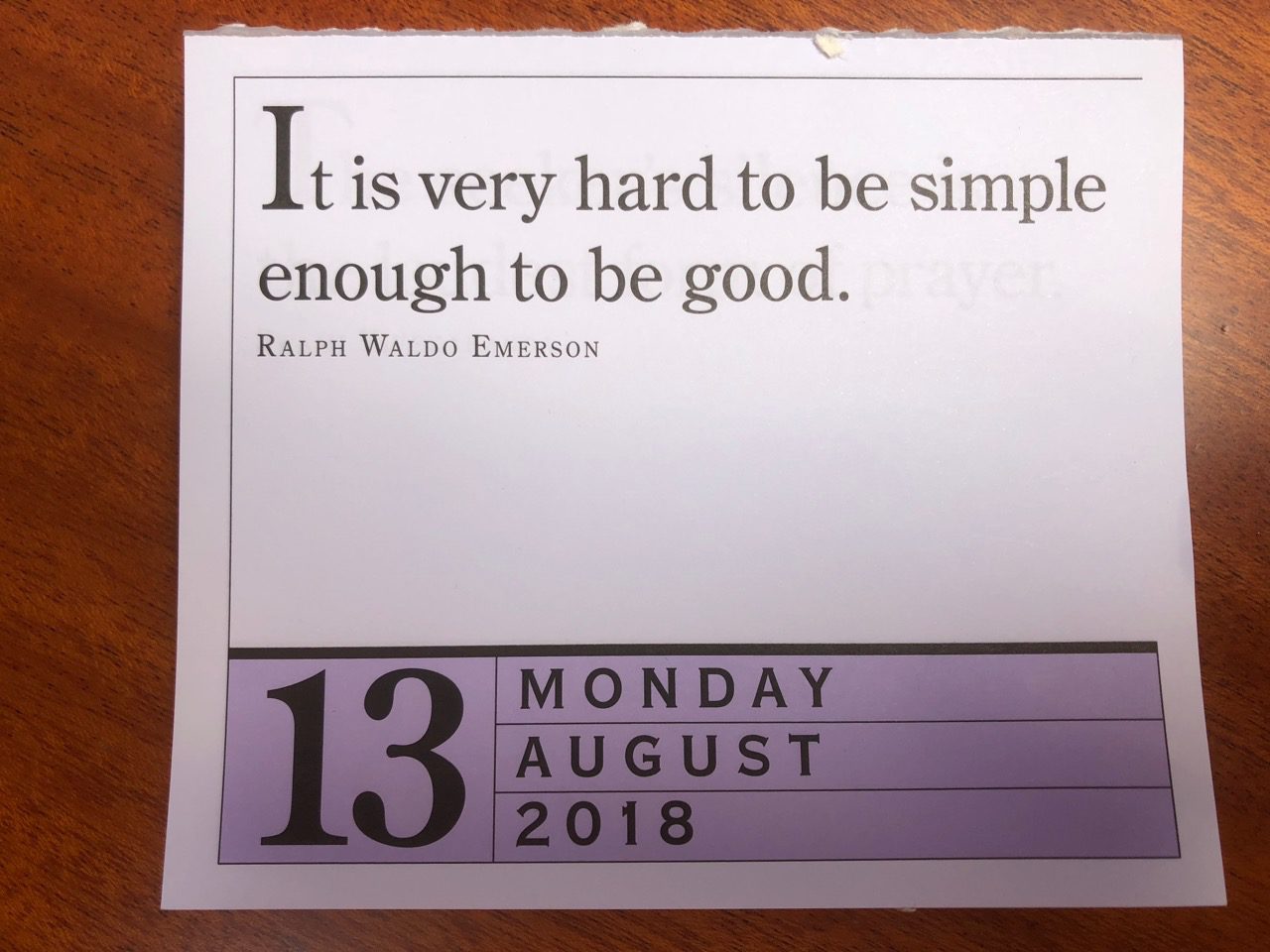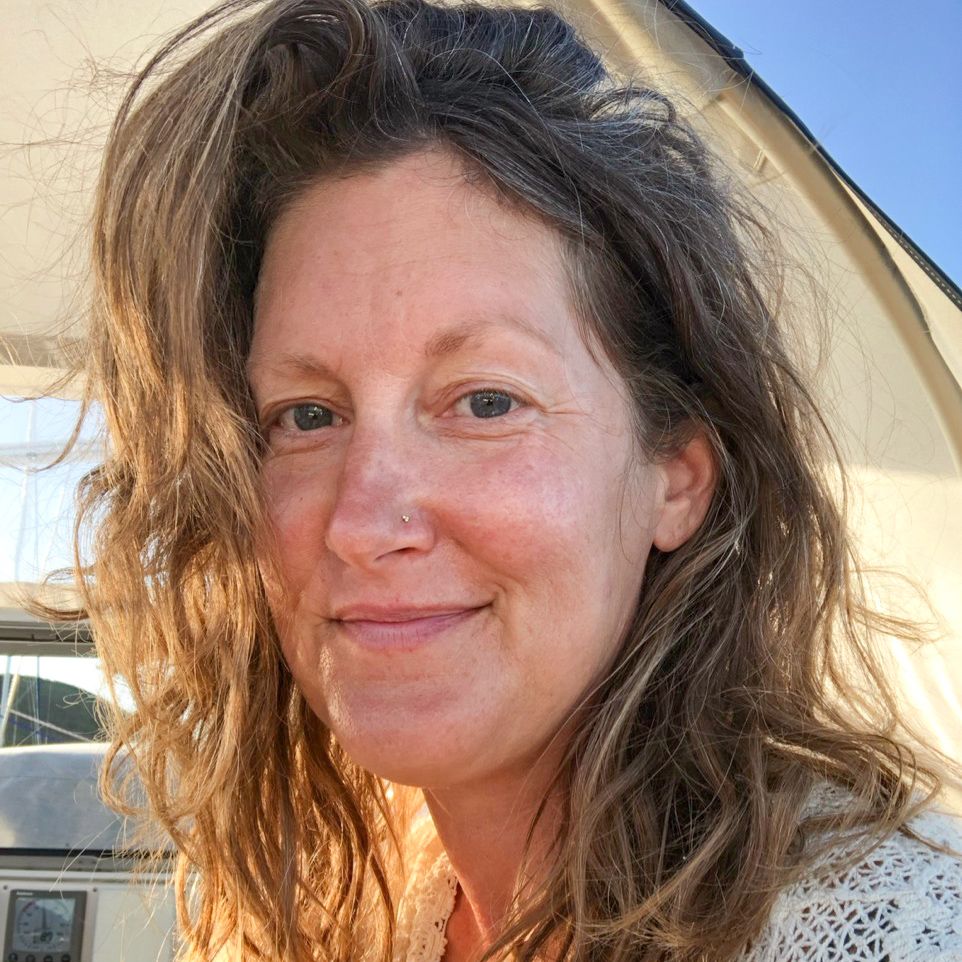
One of the things that people ask most consistently about the path that we have taken is "Do you miss your things?" The simple answer is: No. The longer answer is:
Our path toward living with a smaller footprint aboard Rejoice is both common and unique. We did not come to this as minimalists! We had built a wonderful home when we first began to feel the call of the sea. We were living in San Francisco in a little intentional community in a beautiful Edwardian building. We had a gorgeous five room flat for the two of us. When we first began to aim at the sea, we thought we were just going to rent our flat out for a year or two, step away from our city life and careers to sail, dream new dreams, and see if we wanted to return. Very quickly, though, it seemed like the universe conspired to say to GO, GO, GO.
When we began to cull, we were shocked to discover how much we actually owned. I had 45 pairs of shoes! Letting go became a constant project. After dinner we'd sit down and say "Shall we do a bookshelf?" The question we began with was "What can I let go of?" The answer was: a whole lot! Mostly, we gave things away, peaking one weekend just before we moved out when I posted to Facebook that the enormous room which had been my studio and temple was now hip-deep in books, furniture, clothing, feathers, camping gear, house plants (I rehomed 46), and that all of it was free, come on by.
Phase two was a little apartment in West Berkeley, an 850 square foot one bedroom that was literally on the wrong side of the tracks; the train lines ran right beside our building, stopping all conversation at least once an hour, and sometimes every few minutes. We shared either end of a single desk, either side of a single closet, and were pleased to find how much we adored this simper life. We spent that year getting the house sold, which was complex, buying the new boat, and winding down our work. We had a storage unit where we kept things like sailing and camping gear.
Phase three was moving aboard Rejoice at the end of our one year apartment lease. We didn't have permission to live at our marina full-time yet, so we house-sat and stayed at the boat and with friends, a year with a foot in either world. Our relationship with our stuff in storage was very active; we were there often to stash, retrieve, or shed things as we figured out what we wanted, needed, and could fit on our 40' sailboat.
Yesterday was phase four, the big day: we rented a 15' U-Haul, loaded everything we still own into it, and resettled it all in the countryside for the long term. Everything we own that isn't aboard Rejoice now sits in a 10x10 storage unit with hallways for airflow and ease of access. 65 bins: mostly books, also clothes, household goods, papers. We have three bookshelves, two bicycles, some art. A bit of furniture. We are very, very sore today; it was symbolically important to us to handle everything we own ourselves. WE DID IT! DONE! This is a huge step toward departure.
I have this vivid memory: I am at our house in San Francisco, contemplating leaving it. I have been living, loving, and working from this flat for twelve years. I am standing in my bedroom, with its cove ceiling and fireplace, and the almond-on-ivory striped walls that I painstakingly painted, and I think, "I wonder who I even am outside of this place?" It was a startling and enlightening moment; the thought intrigued and repulsed me. I saw how deep my identification was with the place that I lived and all that it contained. I knew how important it was to set that down in order to explore what I might become next.
When we began to downsize, we would ask ourselves "What can I stand to I let go of?" Over time, the question shifted to became a pairing of "What do I need?" and Marie Kondo's wise "Does this spark joy?" Some objects, it turned out, sparked guilt or sadness. Many objects had acquired meaning merely through time; when you live with something, it begins to feel like part of you. But it isn't. Letting go began as a painful pruning and became a glorious liberation.
In time, I began to get rid of things not despite but because of how they reflected my identity to me or marked time. I wanted a fresh start. I wanted to be like the snake who wraps my arm, chosen to represent a commitment to becoming and transformation: snake sheds her entire surface over and over to keep growing, but she is always snake.

Practical Lessons
-
What to let go of? My friends Oliver and Naya moved several times in a couple of years and had most of their things in storage for a good while. I reached out to Oliver early on and asked for his advice about what to keep and what to let go of; did he have specific thoughts? "Yes!" he said, "I sure do! Get three bins. Put the things you love most in them. Set everything else on fire." This rocked me! I also saw that all the sailors who returned to land after long cruising said they opened their boxes and wondered why on earth they had thought they needed these things. I never saw anyone wish they'd saved more. We therefore leaned in to the discomfort of letting go. We were also compassionate and patient and allowed the process to unfurl in due time, as pressure encourages clinging. We questioned ourselves relentlessly, questioned each another as kindly as we could, and in the end anyone was allowed to decide for themselves what was truly necessary to them. Some surprising and valuable things went off to the winds, but we have three card catalogs and the rusty head of the antique bed we used to take to Burning Man tucked carefully away.
-
We mostly standardized on a single style of bin. This meant that our bins stacked easily when we were packing them at home and transporting them. This becomes a tremendous boon when you're making a giant wall of them in a truck you're going to drive on the highway! Having a standard size also made it easier to lay out the shelving.
-
We used clear bins, which lets you get a quick read on the contents. The IKEA Samla bins, which we got in three different sizes, were perfect for us. Thanks to Damon for this idea!
-
We numbered the bins and listed their contents. Some of the labels are general, like "Cable Stash", but for the most part, every item in every bin got recorded on a Google doc. This was a lot of work up front, and you have to keep it current to retain accuracy, but it easily become second nature to list changes when we were at storage and enter them on the sheet at home. This work doesn't feel like a bother, but like a gift to our future selves. As the Phase three transitional year went on, we could retrieve specific items easily. I realized that I wanted to have a particular book on Taoist energetics aboard. I decided that I didn't want to save my best silk nightgown for an imaginary future, but to take it along and use it to bits. Most importantly, though, when we consider our possessions and expenses over time, we will know exactly what we have without opening a single box; no wondering from an anchorage in Mexico what on earth we're paying to store.
-
The bins are on adjustable shelving. We didn't have to spend money for this; it's the shelving we had in our garage in San Francisco. It is easy to see and access any box immediately. There is air flow between rows of bins, which will lessen the likelihood of mold. We have both Metro and Gorilla shelves; each is now nearing fifteen years old. The particleboard on the Gorilla shelves deteriorates with time, and Metro shelving rusts. We have a powder-coated Metro style shelving from U-Line which is the most durable, if you're thinking really long term.
-
We first moved into a local storage unit. Even doing this for a month or two would have been worth the effort of moving everything twice, as our priorities shifted quickly once we were no longer living with our possessions, and in time we let go of a lot of things that originally went into storage. When we were sure of what we had, we moved out into the countryside for cheaper rates.
-
Mostly, we gave our things away. We have a local thrift store that allows you to specify which charity benefits from the sale of your items, and we were able to donate a lot of money to Dahlia's longtime sangha at the Integral Yoga Institute this way. Also, as folks who have often bought our things second-hand, we loved sending treasure back into the stream. When it felt a little pinchy to drop something into the thrift pile, I'd remember my joy at making amazing thrift scores, imagine someone finding this beautiful thing, and send it on with love. After the fact, we learned that antiques appraisers tend to be estate liquidators as well, and that estate liquidators handle downsizing as well as the estates of people who have died. We have no regrets about the path we chose, but you'll know what's right for you.
Gifting was rewarding in other ways: when I see Leah, she is usually wearing the winged scarf I ached for for ages before I bought it. When I opened the cupboard at Michael's house to look for a serving bowl, I was tickled to find a gravy bowl that I bought the first year we hosted Thanksgiving was now nestled among his dishes. When I reached for Kristen's citrus reamer at her birthday party, I found it was one I had been given by someone I love, and my heart grew warm. Yes, sometimes when I see a thing that used to live with me something inside me pangs and says "mine" or "want". But when I am sitting here on my boat, I don't miss any stuff. I have what I need here; I have enough. And we have set aside a little seed for the day we return to land again. And we have learned that we are happier with less.
The title of this piece is from the teaching of Swami Satchidananda upon the subject of vairagya, nonattachment; I read it, and recorded it carefully when I was young in the special book where I kept words to contemplate and grow from. I kept it because it made me uncomfortable in a way that I felt curious about. For a long time, I wanted that holding. I wanted my possessions to reflect me, ground me, say me. But the older I get, the deeper my practice goes, and the more I know myself, the more I want to belong to everything else, to life itself. Having less that I call mine feels like it allows me to belong to all-that-is more clearly. The more I let go of, the more I find I am and am held.
Ahhhhhhh.




